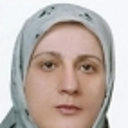Urolithiasis in the First 2 Months of Life.
Maneno muhimu
Kikemikali
BACKGROUND
There is limited data about urolithiasis in young infants. We reviewed clinical, imaging, and biochemical data of urolithiasis in the first 2 months of life.
METHODS
In an 11-year period, 77 of the 1172 children diagnosed with urolithiasis (6.8%) were 60 days old and younger (64.9% boys and 35.1% girls). Routine diagnostic assessments included urinalysis and urine culture; measurement of calcium, uric acid, oxalate, and creatinine in nonfasting random urine; measurement of blood urea nitrogen and serum creatinine, sodium, potassium, calcium, and phosphorus levels; and venous blood gasometry. Urinary calculi were diagnosed using tridimensional ultrasonography with 5-MHz, 7.5-Mhz, and 10-MHz probes.
RESULTS
The most common symptom was irritability (37.6%). A family history of urinary calculi was documented in 49.4% of the patients. The calculi were 0.5 mm to 6 mm in length. Eight infants (10.4%) had urinary tract infection. Hypercalciuria was found in 21 of 62 patients (33.8%). There were no cases of hyperuricosuria, hyperoxaluria, or struvite calculus. Vesicoureteral reflux was reported in 9 of 20 patients who underwent voiding cystourethrography. Two-thirds of asymptomatic and 85% of symptomatic infants were diagnosed during summer and autumn, and the peaks of calculus visits were in September, October, and November. Of 43 infants (55.8%) who were followed up (Mean, 16.2 ± 15.2 months), none needed calculus removal interventions.
CONCLUSIONS
Hypercalciuria is the most common urinary metabolic abnormality in young infants with urinary calculus. Infection was not an important factor for our cohort in the pathogenesis of the disease.


